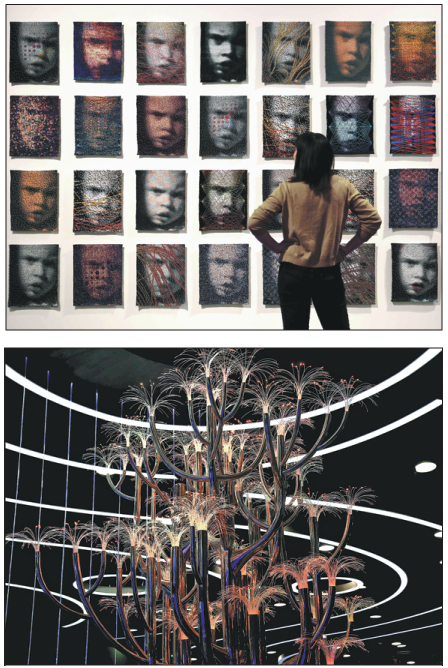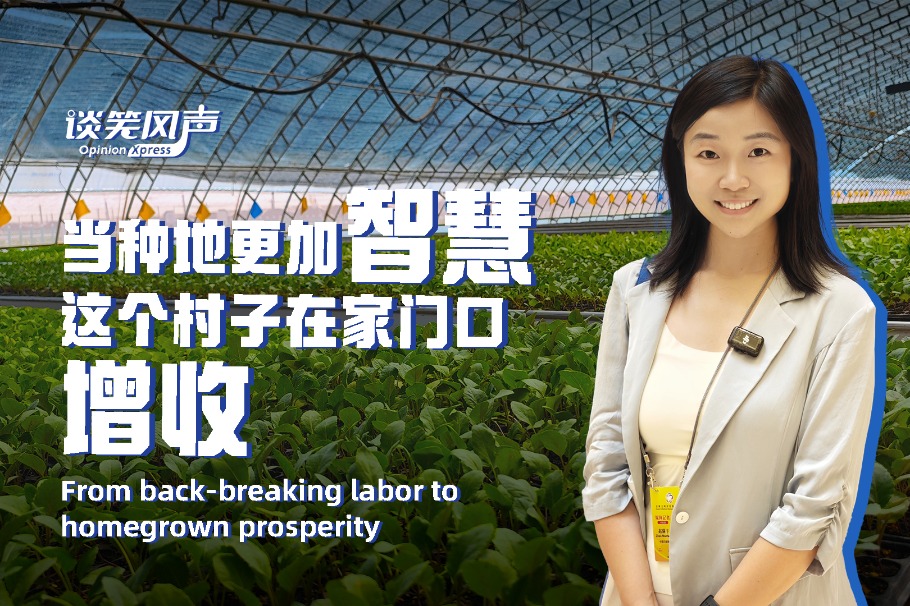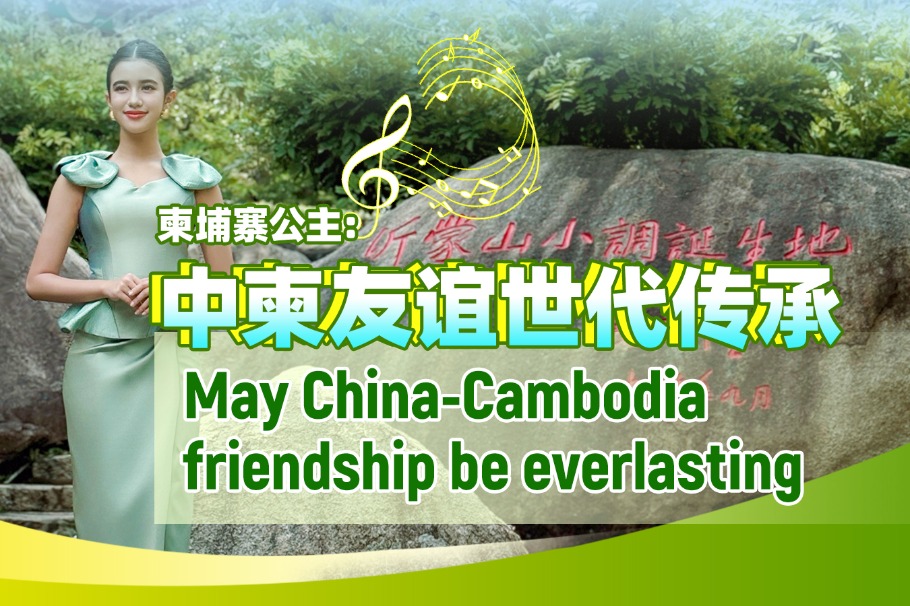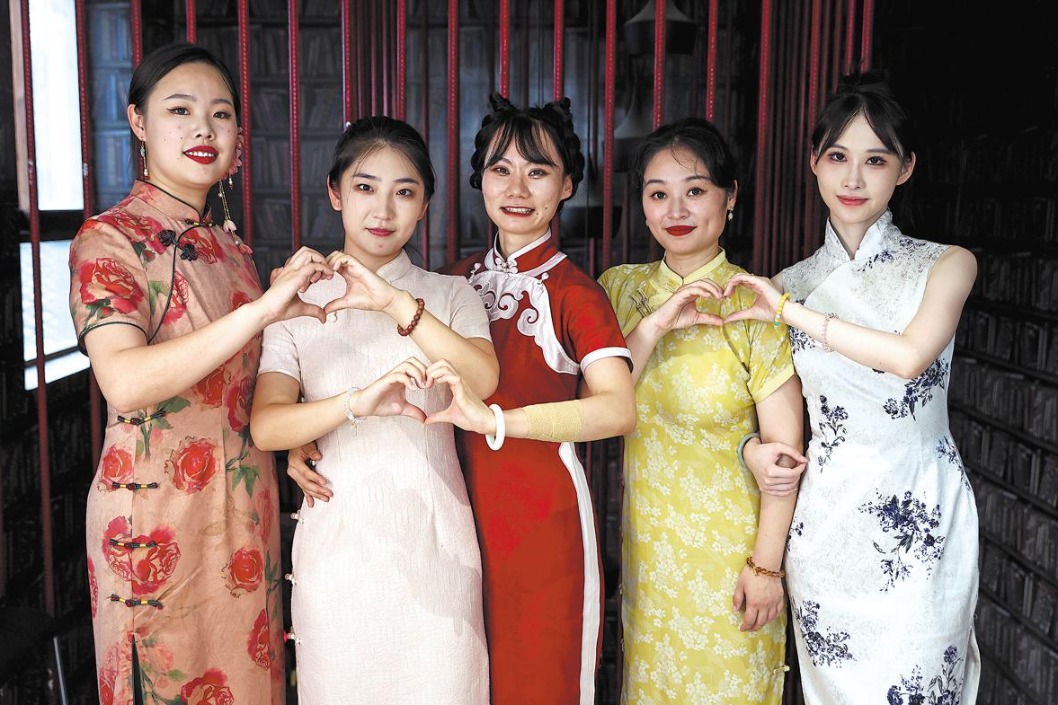Universities organize fiber-art show online

Technology and Innovation in Fiber Art, a virtual exhibition organized by two universities from China and the United States, offers a glimpse into the development of contemporary fiber art-what happens when traditional art incorporates high-tech material.
The joint online show by the Academy of Arts and Design of Tsinghua University and the University of the Arts Philadelphia features 20 artists from China and 20 from the US who take various approaches and use different materials to explore themes via fiber art.
"These artists expand and combine the traditional techniques of weaving, knotting, coiling and interlacing with cutting-edge technologies. They have pushed the boundary of their medium to try new materials," says Yue Song, a co-curator of the show from Tsinghua University.
Fiber art is not limited to materials like silk, wool and cotton. New materials such as optical fiber, chemical fiber and memory alloy can be seen in the works presented.
The Moment, a work by Gao Jing and Lu Qi, re-creates the process of flowers blooming, attracting butterflies and then dying. The twigs of the magnolia in the artwork are rendered with traditional embroidery while the petals are created with a flexible memory alloy to make them open and close.
Yue's work Information-Ecology-Growth uses optical fibers to create an installation of luminous trees, a piece collected by the China Science and Technology Museum.
More than half of the artworks on display explore new technologies such as sensors, human-computer interaction and digital and information technology.
US artist Lia Cook's Su Series contains 32 images of the same face, each translated differently via the weaving process. Some patterns are woven with data visualization of viewers' responses to the woven images and some with neurological scans.
The Light Pavilion by Lin Lecheng is a luminous installation placed in a village in Longyou, Zhejiang province. It's made of 660 bamboo pieces of varying lengths, LED lights and other light strips. The flow of the colorful lights of the pavilion is programmatically designed. It took Lin six months to complete the work with help from locals.
Lin says the artwork can help to decorate public spaces in China's rural areas and he will make more such fiber art in the future.
The ongoing show is separated into two parts-one displaying works by Chinese artists and the other displaying pieces by US artists.
"You can see the difference between the works by artists from the two countries," Yue says.
The Chinese artists' works are dominated by black and white while those by US artists use bright colors.
Chinese artists focus more on the implication of technologies in their works while their US counterparts concentrate more on expression.
The reason for the contrast can be partly attributed to cultural differences and partly to the different development phases of fiber art in the two countries, Yue says.
Fiber art had reached its peak in the 1970s in the US while some colleges in China established majors in fiber art in the 2000s.
While the traditional craft of weaving has a long history in China, the contemporary fiber art to combine it with new materials and technologies started to develop after 2000.
Lu Xiaobo, dean of the Academy of Arts and Design at Tsinghua University, says technological development is often an element propelling the evolution of art. "Fiber art has accomplished interdisciplinary and cross-disciplinary approaches under the movement of the integration of art and science."
The show was conceived two years ago as a physical exhibition. Its opening was planned for April. However, due to the pandemic, it was moved to a virtual space (fibertechart.ad.tsinghua.edu.cn) designed by Tsinghua University, where people can view it.
"I hope this exhibition will allow fiber artists and audiences to re-examine where this field is at present, and will serve as an inspiration for the future generation of textile artists," says Mi-Kyoung Lee, a co-curator of the show, from the US university.

Today's Top News
- China to open its door to foreign investment wider
- China criticizes Canadian tariffs on products containing Chinese steel
- US legislative chaos undermines its democracy
- Why China is irreplaceable in supply chain
- China's FDI inflow tops $700b since 2021
- Australia, China set to bolster steel partnership






























